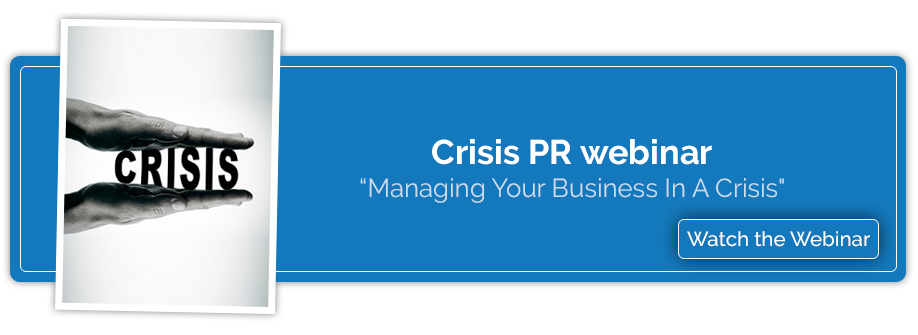 PR tips for handling routine business and crisis errors
PR tips for handling routine business and crisis errors
“To err is human,” according to Alexander Pope. But accepting that mistakes will happen is one of the biggest challenges top executives identify in their personal improvement plans.
Having a great team in place is the first step in handling mistakes, and public relations professionals provide rapid response to do the heavy lifting during the good times and the bad. Even if you aren’t certain of the cause of a crisis or the potential solution, responding in a professional (and fiscally appropriate) manner maintains your company’s reputation.
Here are the top five mistakes C-suite executives make and how to handle them:
- Poor timing.
While poor timing is one of the most frequent (and costly) mistakes in routine business and during a crisis, it’s also one of the easiest to improve and manage when it happens. Sometimes lack of awareness in the stages of the communication cycle leads to a statement that is out of tune with the situation or issued at a bad time.
- Solution: Use your PR team’s expertise in the industry as well as their ability to coach on delivering messages to customers.
- Missed opportunity.
There are several kinds of gaps in this category, from incomplete public follow-up to not capitalizing on an education opportunity. For example, blind spots can occur when a company overlooks a fortuitous chance for goodwill or outreach to an underrepresented customer base.
- Solution: Knowing the operations cycle and standard processes is great, but having touch points with your PR team keeps more eyes on the market, tying your expertise to the community’s gaps.
- Process focus.
Though it may prove that you know your industry, using jargon shows you are immersed internally instead of understanding the needs of your customer. Additionally, companies often spend too much time ensuring they check the boxes instead of being flexible and responsive to their customers’ needs.
- Solution: A good PR team will gather the information that can help you keep the company focused on outcomes (instead of checklists) and provide ways to streamline communications internally and externally.
- Passive ringleader.
Often when a company portrays a wait-and-see attitude, executives will ignore the mistake altogether or they place someone who is unqualified on the podium. This increases chances for negative reactions including personal blame attributed to the C-suite. Appearing apathetic or distant, ignoring the situation or defensively reacting can all result in damage to your reputation.
- Solution: Listening to your PR team reduces this complication tremendously because they have expertise in reputation management; you just need to be open to their guidance.
- Expectation misalignment.
Sometimes, in their eagerness to share messages, executives do not communicate with each other first to ensure they are on the same page. Individuals in the C-suite may differ on topics and/or expected outcomes.
- Solution: Preplanning for common industry mistakes and even the catastrophic crises means you are not reinventing the wheel when the team isn’t at its finest.
Mistakes are opportunities for the greatest champions of the company’s mission to show they work hard at being prepared, ethical and relevant to their customers and investors. To improve the thought leadership preparedness components at your company, watch Axia Public Relations’ webinar on Managing Your Business in a Crisis for inside secrets on crisis public relations.

 Heather M. Hilliard is a marketing and strategic planning professional with expertise in crisis management communications. With two master’s degrees and her international Certified Emergency Manager credential, she has worked through disasters as well as “normal business” to offset the impact of both large- and small-scale events in a variety of industries. She is an adjunct professor at Tulane University and has worked for Axia Public Relations since December 2015. Connect with Axia on Twitter @axiapr or tell us what you think in the comments below.
Heather M. Hilliard is a marketing and strategic planning professional with expertise in crisis management communications. With two master’s degrees and her international Certified Emergency Manager credential, she has worked through disasters as well as “normal business” to offset the impact of both large- and small-scale events in a variety of industries. She is an adjunct professor at Tulane University and has worked for Axia Public Relations since December 2015. Connect with Axia on Twitter @axiapr or tell us what you think in the comments below.
Featured image credit: 123rf.com
Topics: public relations, crisis communications


Comment on This Article